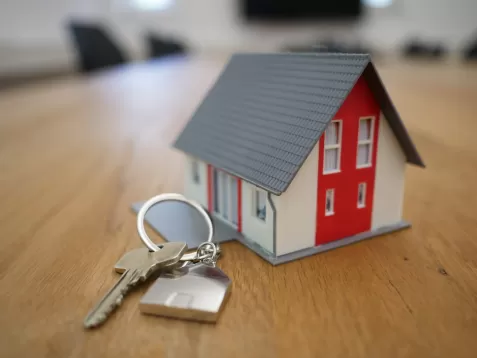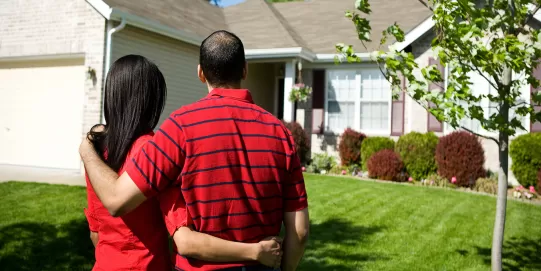The easiest path to wealth in the United States is through homeownership. Unfortunately, this is a path that has been historically loaded with challenges for minorities.
As the Urban Institute shares, “The gap in the homeownership rate between black and white families in the U.S. is bigger today than it was when it was legal to refuse to sell someone a home because of the color of their skin.”
When the Fair Housing Act (which outlawed housing discrimination based on race, color, religion, and national origin) was passed in 1968, 42% of Black families owned a home, compared to 65% of white families. U.S. Census Bureau data shows that Black Americans still have the lowest rate of homeownership compared to other racial groups at 47%, with white Americans at 76%, Hispanic Americans at 51.4%, and Asian, Native Hawaiian and Pacific Islanders at 61.4%.
The reasons for the disparities are varied, and include racism, discriminatory housing practices, education, and lack of access to resources.
According to the Urban Institute, “The racial gap in homeownership is also rooted in federal housing policies, created in the 20th century in response to the Great Depression, ‘that explicitly discriminated against African American, Latino, and other minorities by denying them access to federally insured mortgage programs because of their race,’ Nikitra Bailey, executive vice president of the Center for Responsible Lending, told a House committee in May 2019.”
One such discriminatory housing policy was redlining, which Investopedia explains: “The term ‘redlining’ was coined by sociologist John McKnight in the 1960s and derives from how the federal government and lenders would literally draw a red line on a map around the neighborhoods they would not invest in based on demographics alone. Black inner-city neighborhoods were most likely to be redlined. Investigations found that lenders would make loans to lower-income whites but not to middle- or upper-income African Americans. In 1996, homes in redlined neighborhoods were worth less than half that of the homes in what the government had deemed as ‘best’ for mortgage lending, and that disparity has only grown greater in the last two decades.
Reverse redlining is the practice of targeting neighborhoods (mostly non-white) for higher prices or lending on unfair terms such as predatory lending of subprime mortgages.”
“When you're not provided the same level of education from the start, it automatically puts you at a disadvantage,” says Las Vegas Broker Associate April Wright of eXp Realty, and a past vice president for Black Real Estate Professionals.
Sayonara Garcia is the managing broker for Century 21 in Las Vegas and the current president of the Las Vegas chapter of the National Association of Hispanic Real Estate Professionals (NAHREP), an organization committed to “helping more Hispanic families achieve the American dream in a sustainable way that empowers them for generations to come.”
“With NAHREP, we’re helping the Latino population not only build their dreams, but also to build wealth,” Garcia says.
Organizations like NAHREP are helping even the odds. The Urban Institute estimates that between 2020 and 2040, 70% of new homeowners in the United States will be Latinx. That number may be lower in Nevada, as the current seller’s market is making it difficult for many new home buyers.
“Latinos are being deprived at this time because of all the big investors coming in and overpaying for what is available,” Garcia says. “If we had new builders developing more affordable housing, we’d have enough so it wouldn’t all go to the investor population.”
Related: Navigating a Seller’s Market
A Powerful Foundation
While homeownership provides families with probably the largest investment in their lives, it also helps strengthen communities, while providing children with a stable living environment.
Every three years the Survey of Consumer Finances releases a report outlining family income, credit use and other financial information. The 2019 report shows that the net worth of a homeowner is more than 40 times greater than that of a renter.
“It changes the game,” Wright says. “It opens you up to possibilities you weren’t thinking about before. There are tax advantages and ways to avoid capital gains. And you can even leverage the equity you have in your house to start a business of your own, so you don’t have to rely on other people for employment. That's powerful information that needs to become a common conversation in the black community.”
Wright learned this lesson early, purchasing her first home just a few years out of high school. She was renting a small studio, while her sister had a one-bedroom apartment she was sharing with her boyfriend.
“We realized we were always at each other’s homes anyway, so we pooled our money and bought our first house,” she says. “We sold it two years later and I made more money than I had working in the three years since I had left high school.”
After that, she earned her real estate license and built up her business buying and selling more properties in Las Vegas.
Access to Education and Resources
Garcia and Wright agree that much of the solution lies in education and adjusting expectations. While they are trained in the art of real estate, in order to best serve their clients, they have also honed their skills in financial coaching, credit repair, housing counseling and down payment assistance programs.
“A lot of our populations think they can’t purchase, but they have to look for the opportunities that are out there,” Garcia says. “If they can’t become a homeowner now, they can at least start the process. There’s always a way.”
“I work with people who are my clients for life,” Wright says. “The conversation I want to have with them is how to build real wealth.”
She says one of the first steps is understanding the value of delayed gratification, as things like expensive cars or weddings don’t make a lot of sense when you’re paying rent to someone else.
“It’s important to develop good habits early,” Wright says. “Think about your goals and save your money for what you want down the road.”
The Almighty Credit Score
Credit scores play a huge role not only in qualifying for a home loan, but also in the interest rate that goes along with it. And the difference of one percent could mean savings of thousands of dollars over the life of a loan.
The Urban Institute shares that more than 50% of white households have a FICO credit score above 700, compared with only 21% of Black households.
The first step in improving a credit score is to know what it is. Unfortunately, there are many people who would rather not know because of faulty assumptions. Wright tells the story of a client who assumed her credit was bad and so was reluctant to find out.
“We all have egos and we’ve all been hit by hard times, but instead of assuming, let’s find out,” Wright says. “She came back with an 807 (considered excellent). I was so happy for her I almost cried.”
Obviously, this can go the other way as well, and knowing where you’re starting from can help get that number up, through changing habits and knowing how different debt is measured. Credit card debt, for example, has a much bigger impact on a credit score than medical debt.
Related: Here’s the Scoop on Credit Scores
There’s Always a Way
The current market makes it difficult to buy a dream home right off the bat, but that can be achieved with patience, perseverance and strategy. Wright helps many of her clients get into duplexes, triplexes, fourplexes or condos. They live there for a couple of years, letting their equity increase and then they buy the dream house four or five years later. Some are even able to buy condos for their children in college, rather than making monthly payments for an apartment or dorm room.
“A lot of people can afford the monthly payment, as rents are often higher than a mortgage payment,” Garcia says. “Sometimes they’ll be in a better financial situation if they actually purchase, but they don’t know how.”
Wright tells the story of a single mom who recently closed on a home. She was approved for $160,000, which isn’t much in the Southern Nevada market, but, she also qualified for the Nevada Housing Division’s Home Is Possible program, which gave her the funds she needed for her down payment. She ended up buying a home for around $3,000 out of pocket, which is less than the first and last month’s rent she would have needed for an apartment.
“She knew this wasn’t her forever home,” Wright says. “It’s not in a crème de la crème neighborhood, but she knows I’m not going to put her someplace that isn’t safe.”
In addition to acquiring property in a very tough market, Wright says it gave her client the opportunity to demonstrate to her daughter that they could forget the past and move forward.
“It’s a home that will allow her and her daughter to live happily and then when the time comes, they can move into something else,” Wright says. “And she knows she’s in control now. It might be hard now, but it’s something that can get you where you want to go in five years. You just have to think long-term.”
Related: Home Sweet…Condo? Why an attached home purchase could be in your future.
You Don’t Have to Go It Alone
While many challenges facing minorities go back to the very beginning of our country’s history, a light is being shined on them now, with various organizations working to address the disparity. In addition to NAHREP and Black Real Estate Professionals, there are many other organizations offering programs to help people of color achieve the American dream.
- In southern Nevada, housing leaders, real estate professionals and community have joined together to form the Coalition to Make Homes Possible, which has a goal to give 25,000 Black families the tools they need to achieve homeownership in the next ten years. They offer free master classes giving students one-on-one coaching on how to build a personalized path to homeownership, as well as what money is available to help with down payments.
- JPMorgan Chase has introduced the Chase Homebuyer Grant, which is available to first-time homebuyers in 6,700 communities that the U.S. Census has identified as majority Black and Latinx residents.
- The Nevada Housing Division’s Home Is Possible program, which is available to all Nevadans, provides up to 5% of the loan value which can be used toward down payment and closing costs.
“It’s up to us (real estate professionals) to identify our client’s needs and then match them with the right program,” Wright says.
Starting The Process
There are many steps involved in buying a home, and there are just as many resources out there to help along the way. Rather than trying to go it alone, find a real estate agent or lender who can help you navigate the process, while also helping identify programs you might qualify for. Though it might be challenging, home is possible.


